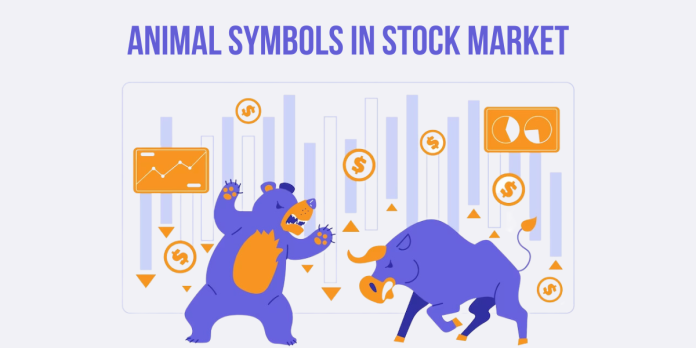All stock market participants are aware of the two animals widely popular in day-to-day market operations these are the bulls and the bears. A bull market is characterized by optimism and continuous highs, while a bear market signifies a prolonged decline.
Animals in the stock market are commonly used terminology to define specific characteristics of the type of traders or investors or market scenario. There are many types of market participants across the stock market, whether in the domestic or international market, and these are described by various animals. However, these participants are present but not widely discussed. In this article, we will explore these animals and their behaviour.
- Bulls symbolize the investors or traders who hold an optimistic outlook on the future of the stock market, anticipating a sustained upward trajectory. They are the driving force behind pushing up the share prices of companies.
- Bears represent investors or traders who take an opposing stance to bulls. They firmly believe in an impending market decline and maintain a pessimistic view of the stock market’s prospects, anticipating it will be in a downturn. Typically, bears are responsible for driving down share prices.
- Rabbits, in market parlance, refer to traders or investors with a penchant for extremely short-term positions, often measured in minutes. These traders are primarily scalpers, focused on seizing intraday opportunities to swiftly capture profits while avoiding overnight or long-term risks.
- Turtles, in the context of investors, are known for their deliberate approach. They exhibit patience when it comes to buying and selling, preferring a long-term investment horizon. They focus on minimizing the frequency of trades and prioritize long-term returns, showing little concern for short-term fluctuations.
- Pigs are the investors or traders characterised by impatience, a willingness to take high risks, greed, and emotional decision-making. Pigs do not engage in any form of analysis; instead, they constantly seek hot tips and aim to make quick profits in the stock market. It often ends up as the biggest loser in the stock market.
- Ostriches are the type of investors who bury their heads in the sand during bear markets, hoping that their portfolios won’t be severely affected. These investors ignore negative news, expecting that it will eventually destroy without impacting their investments. They believe that if they remain unaware of their portfolio’s performance, it might somehow weather the storm and turn out fine.
- Chicken is a term used to describe investors who exhibit fear of the stock market, leading them to avoid risks. They opt for conservative investment vehicles like bonds, bank deposits, or government securities to shield themselves from market volatility.
- Sheep investors are characterized by their unwavering commitment to a single investing style, regardless of shifting market conditions. They tend to be late entrants in uptrends and slow to exit downtrends. They prefer to align themselves with the majority, often following the crowd and are generally uninterested in developing their own investment or trading strategies.
- Dogs refer to stocks that have been heavily battered by the market due to their underperformance. Financial analysts often closely scrutinize these dog stocks, as they anticipate potential recoveries in the coming days.
- Wolves are powerful investors or traders who use unethical means to make money from the share market. Mostly, these wolves are involved in the scams that move the share market when it comes to light. Wolves are influential investors or traders who employ unethical methods to profit from the stock market. Often, these wolves are associated with scams that can significantly impact the stock market when exposed.
We hope this information gives you some insights into the various types of investors and traders in the stock market. Now, consider which category best describes your own approach.


